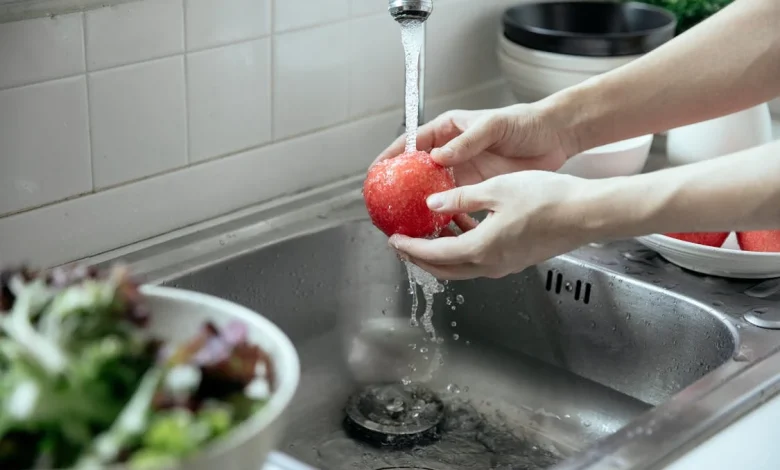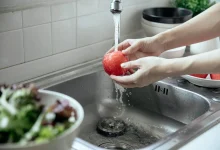
Water is fundamental to life, but its purity isn’t always guaranteed. Contaminated water can harbor harmful pathogens, chemicals, and pollutants, posing serious health risks to those who consume or come into contact with it.
According to the USGS, almost 50 percent of tap water in the US is contaminated by toxic chemicals. Since the 1940s, these compounds have found their way into numerous common products, ranging from nonstick cookware and cosmetics to rain jackets. However, exposure to these chemicals can result in significant health risks.
Research published in Nature further suggests that such contamination is the direct result of a few factors. These factors include the water supply, local and regional characteristics, aging water infrastructure, industrial or commercial operations, and social determinants. Therefore, if you’re concerned about your local water quality, taking proactive steps to avoid contaminated water is essential.
Here are a few practical strategies to help you stay clear of contaminated water and safeguard your well-being.
Know Your Water Sources
Understanding the sources of your water is the first step in preventing contamination. Whether you’re drinking from a tap, a well, a natural spring, or a stream, each source carries its own potential risks.
Public water supplies are generally regulated, but private wells may be susceptible to contamination from nearby agricultural activities, industrial runoff, or septic systems. When traveling or hiking, research local water sources beforehand and opt for treated or purified water whenever possible.
You should also keep an eye out for any news of contamination surrounding your local water source. Take the Camp Lejeune incident as an example in this case. According to TorHoerman Law, the Camp Lejeune water supply was contaminated with toxic chemicals. This led to severe health problems, including cancer, among locals.
Following this incident, the Camp Lejeune water contamination lawsuit was filed. The Camp Lejeune victims had to take legal steps through the lawsuits to secure justice and compensation for their losses. However, if they had been aware of the contamination in the first place, those people would’ve been spared from the adverse health effects.
Invest in Water Filtration
A reliable water filtration system is your best defense against contaminants. It can be anything like a portable filter for outdoor adventures, a countertop system for home use, or a pitcher filter for daily hydration.
Look for filters certified by reputable organizations like the Water Quality Association, which ensure that the device effectively removes specific contaminants. Regularly replace filter cartridges according to manufacturer recommendations to maintain optimal performance.
Boil Water Before Consuming
Boiling water stands as a straightforward yet potent technique for eliminating harmful bacteria, viruses, and parasites. To guarantee microbial safety, bring water to a vigorous boil for a minimum of one minute. You can also extend the boiling time to three minutes if you’re living in a high-altitude area.
This technique is particularly crucial when camping or traveling in remote areas where water quality may be questionable. Remember that boiling doesn’t remove chemical contaminants, so it’s best paired with other purification methods for comprehensive protection.
Besides, it was recently revealed that boiling tap water can also remove almost 90 percent of microplastics. This was presented in a study published in the Environmental Science and Technology Letters journal. Researchers also suggest that employing this technique in conjunction with a basic coffee filter can remove other potentially harmful particles that pose health risks.
Practice Proper Hygiene
Contaminated water isn’t just a concern for drinking. It can also pose risks through skin contact or ingestion during activities like swimming, bathing, or washing dishes.
Adopting good hygiene practices is essential to reduce exposure to harmful pathogens. Opt for designated swimming areas when possible while avoiding ingesting water. After swimming, take a thorough shower to cleanse your skin of any contaminants, using biodegradable soap to minimize environmental impact.
Stay Informed and Vigilant
Stay informed about potential water contamination risks in your area by monitoring local advisories, water quality reports, and environmental news. Be vigilant for signs of contamination, such as unusual odors, discoloration, or taste in your water supply.
If you suspect that your water may be contaminated, avoid using it for drinking, cooking, or bathing until it’s been tested and deemed safe. Report any concerns about water quality to local authorities or environmental agencies to prompt investigation and action.
Frequently Asked Questions (FAQs)
What is the best way to get clean water?
The optimal method for neutralizing disease-causing organisms, such as viruses, bacteria, and parasites, is boiling. Both the elevated temperature and duration of boiling are crucial for efficiently eradicating these organisms from water. Furthermore, boiling remains an effective treatment even if the water appears cloudy or murky.
What are the effects of water contamination?
Water contamination can lead to various types of health problems, including gastrointestinal illnesses, skin infections, and respiratory problems. Environmental degradation, such as habitat destruction and loss of biodiversity, can occur. Additionally, contaminated water can result in economic burdens due to medical expenses and decreased productivity.
How can water be prevented from getting contaminated in the first place?
Preventing water contamination involves implementing proper waste disposal methods, such as treating sewage and industrial effluents before discharge. Regular monitoring and maintenance of infrastructure like sewage systems and water treatment plants are essential. Public education on responsible chemical usage and conservation practices can also help safeguard water quality.
In conclusion, protecting yourself and your loved ones from contaminated water requires awareness, preparedness, and proactive measures. By keeping the above tips in mind, you can minimize the risks associated with waterborne contaminants. These practical strategies will help ensure that the water you consume and interact with is clean, safe, and conducive to a healthy lifestyle.
